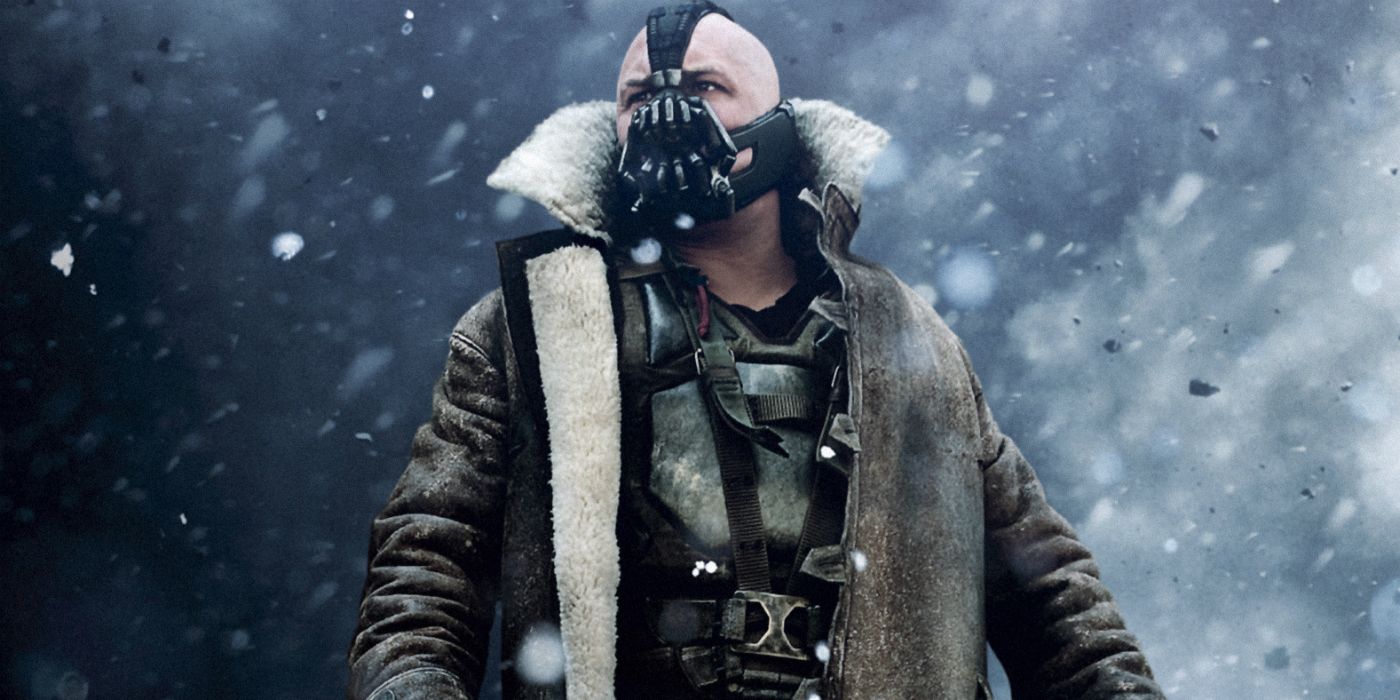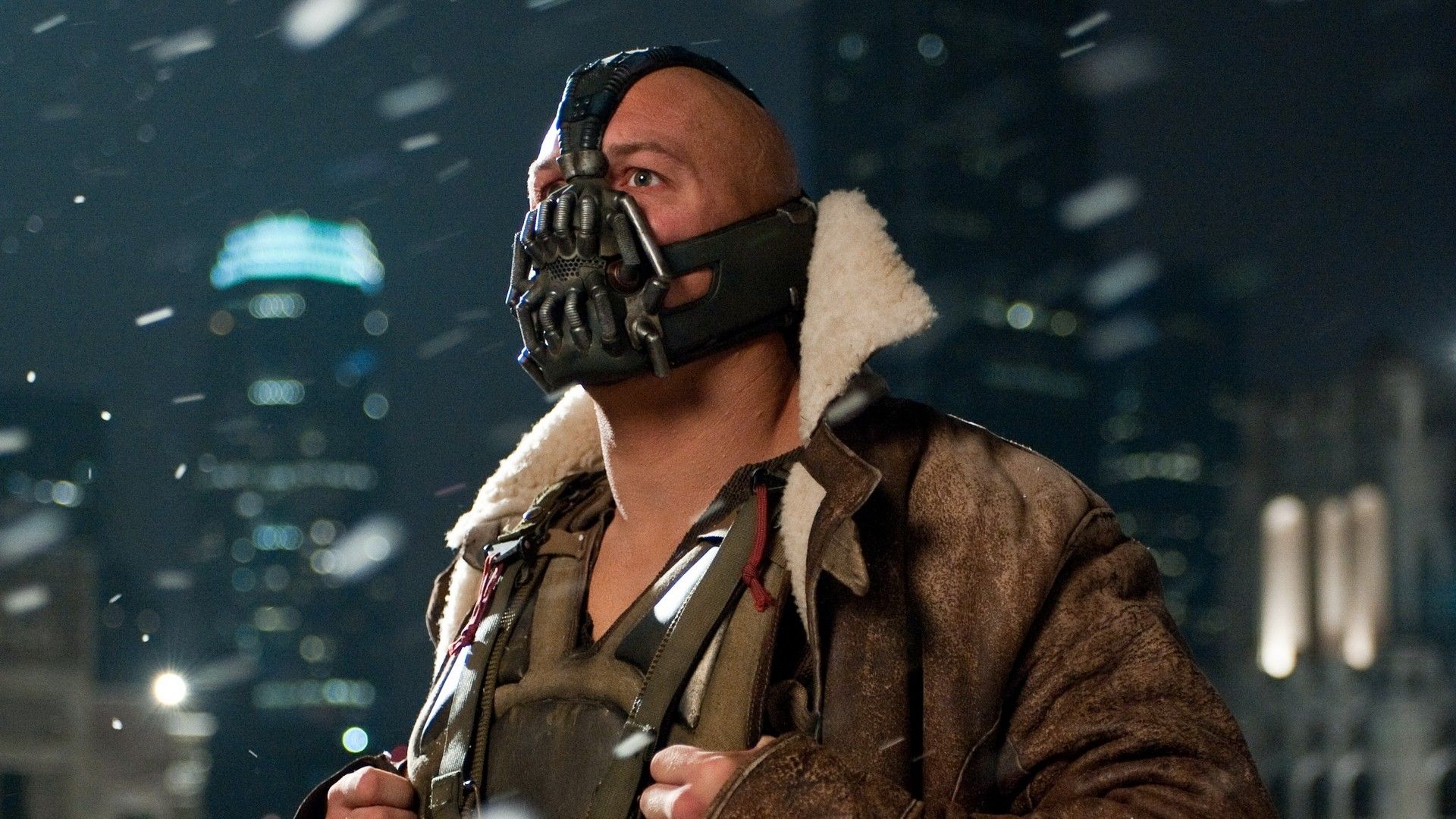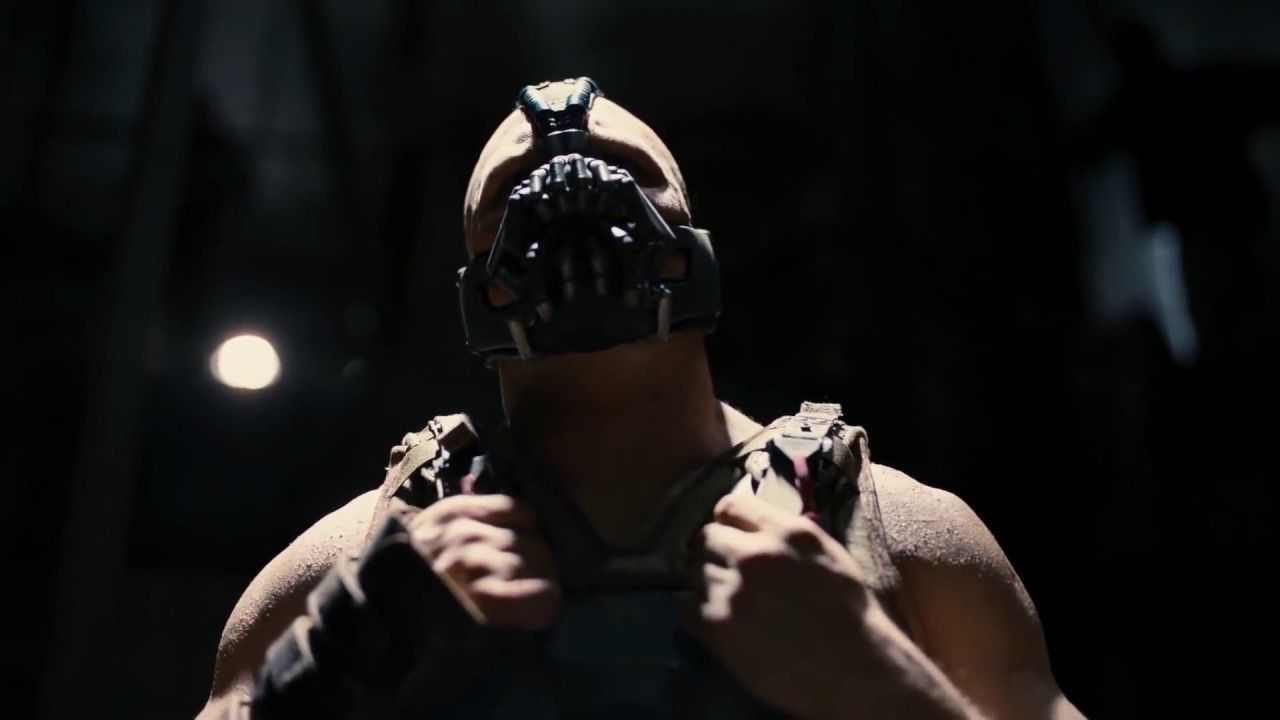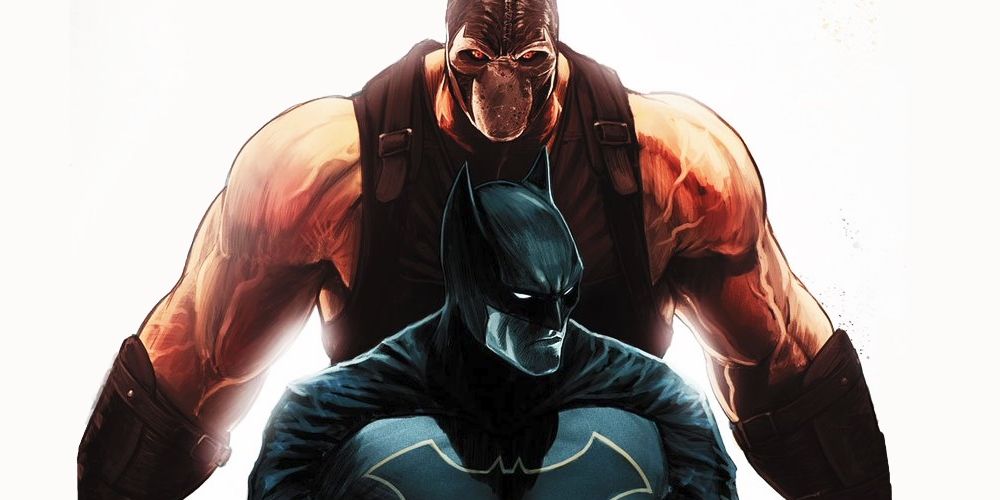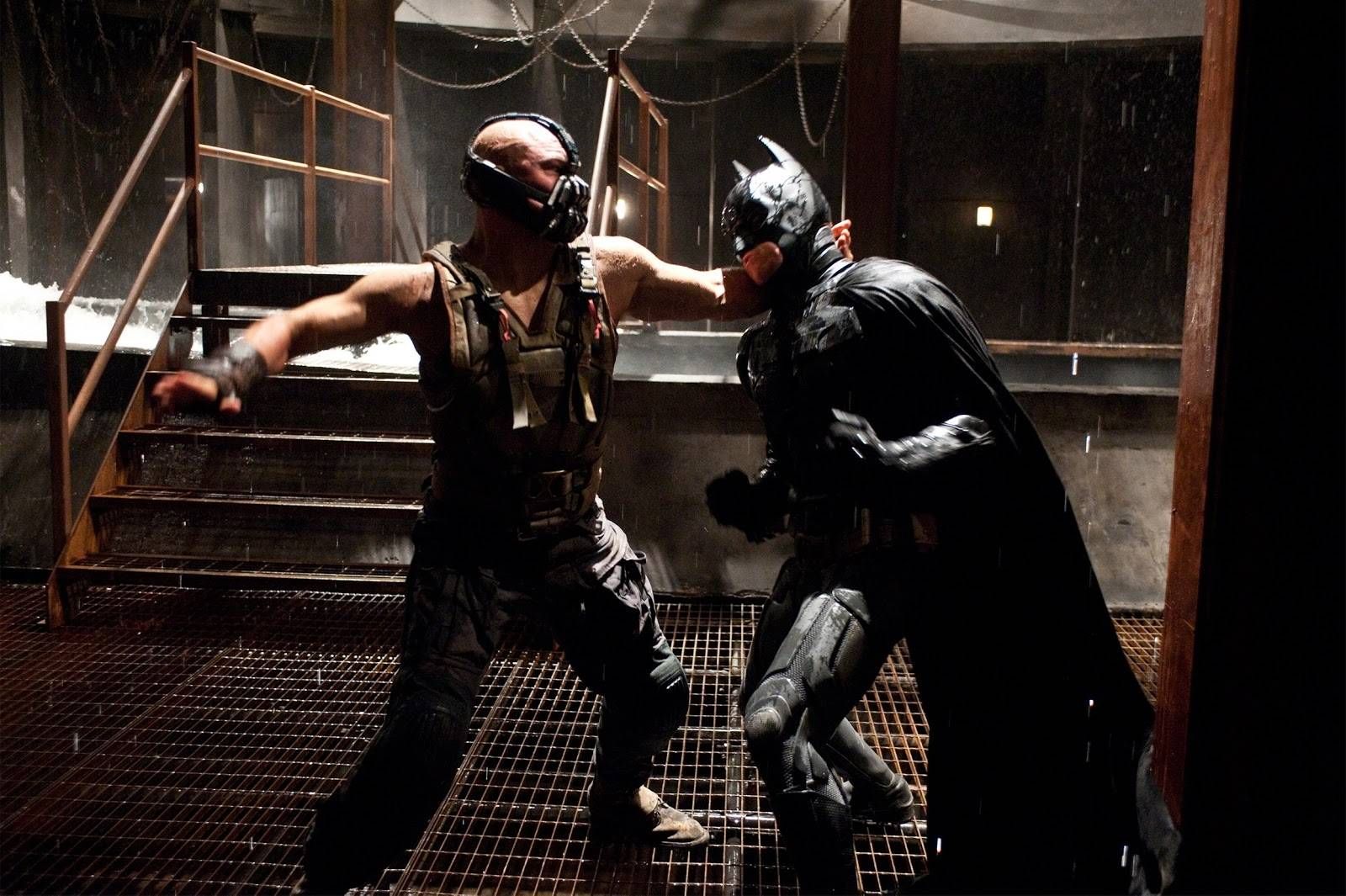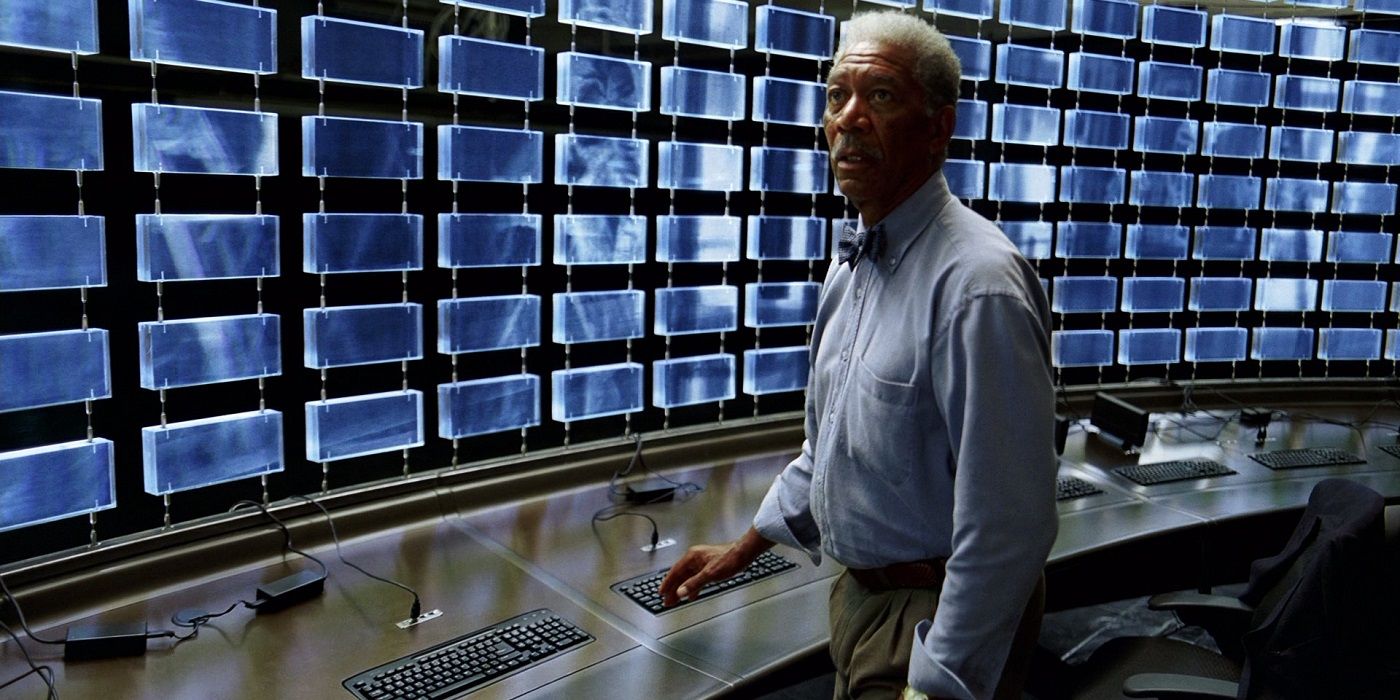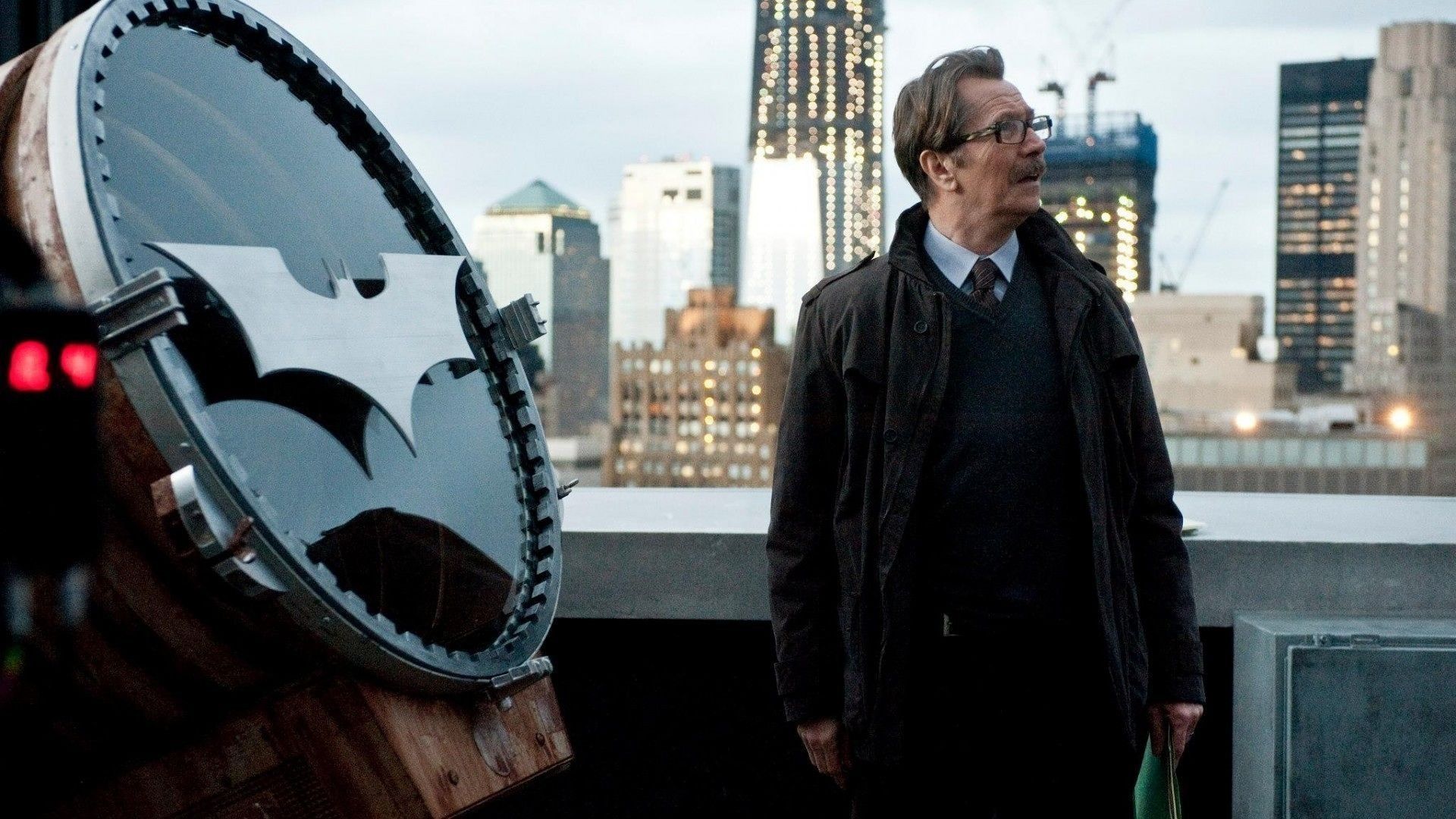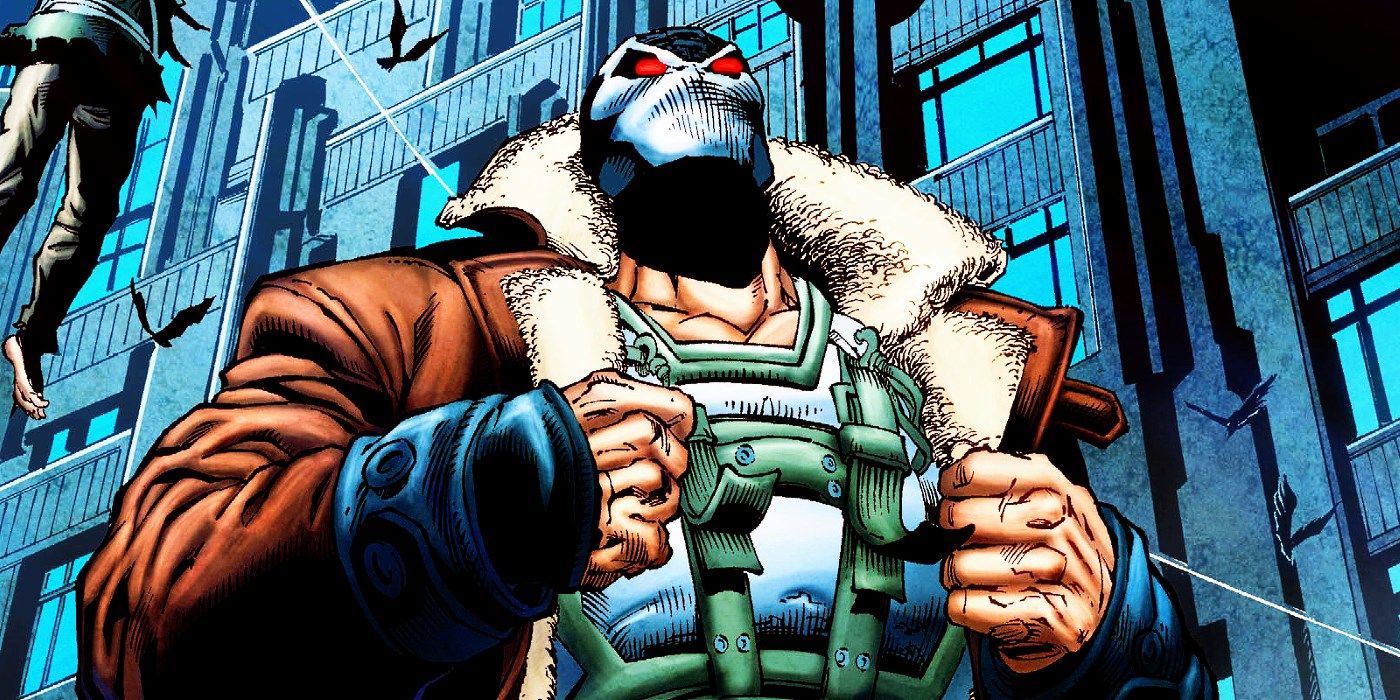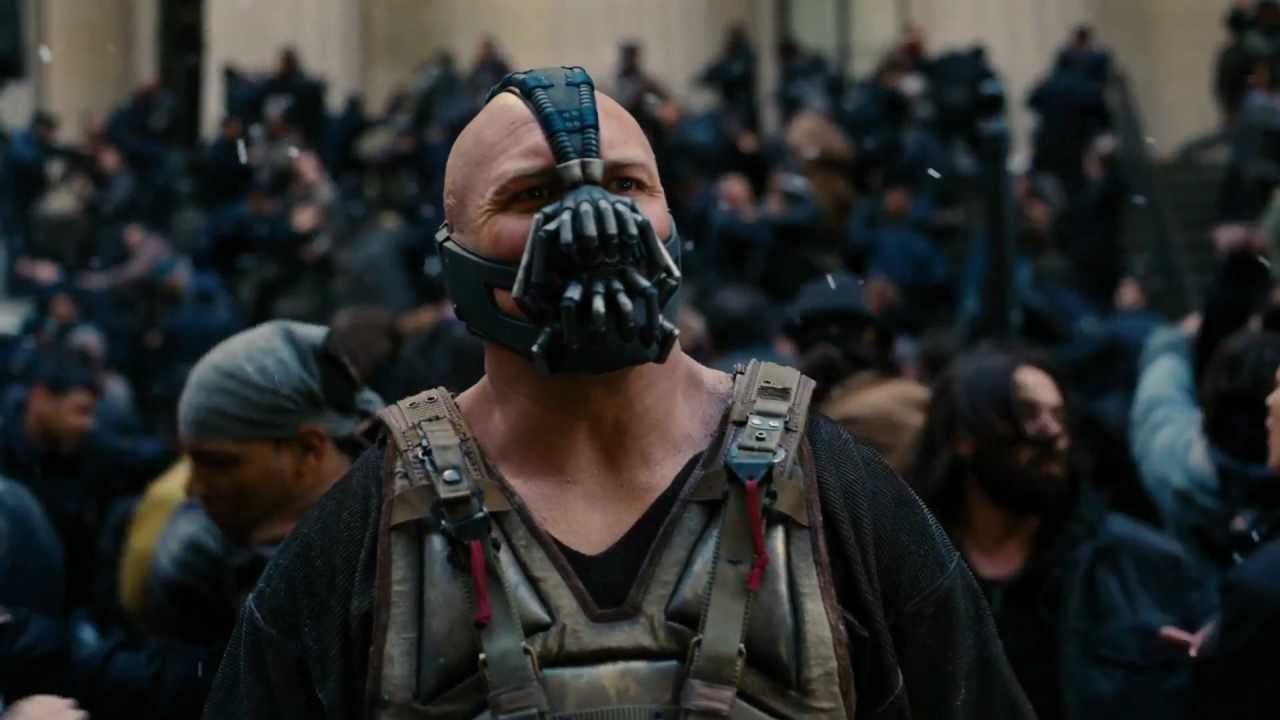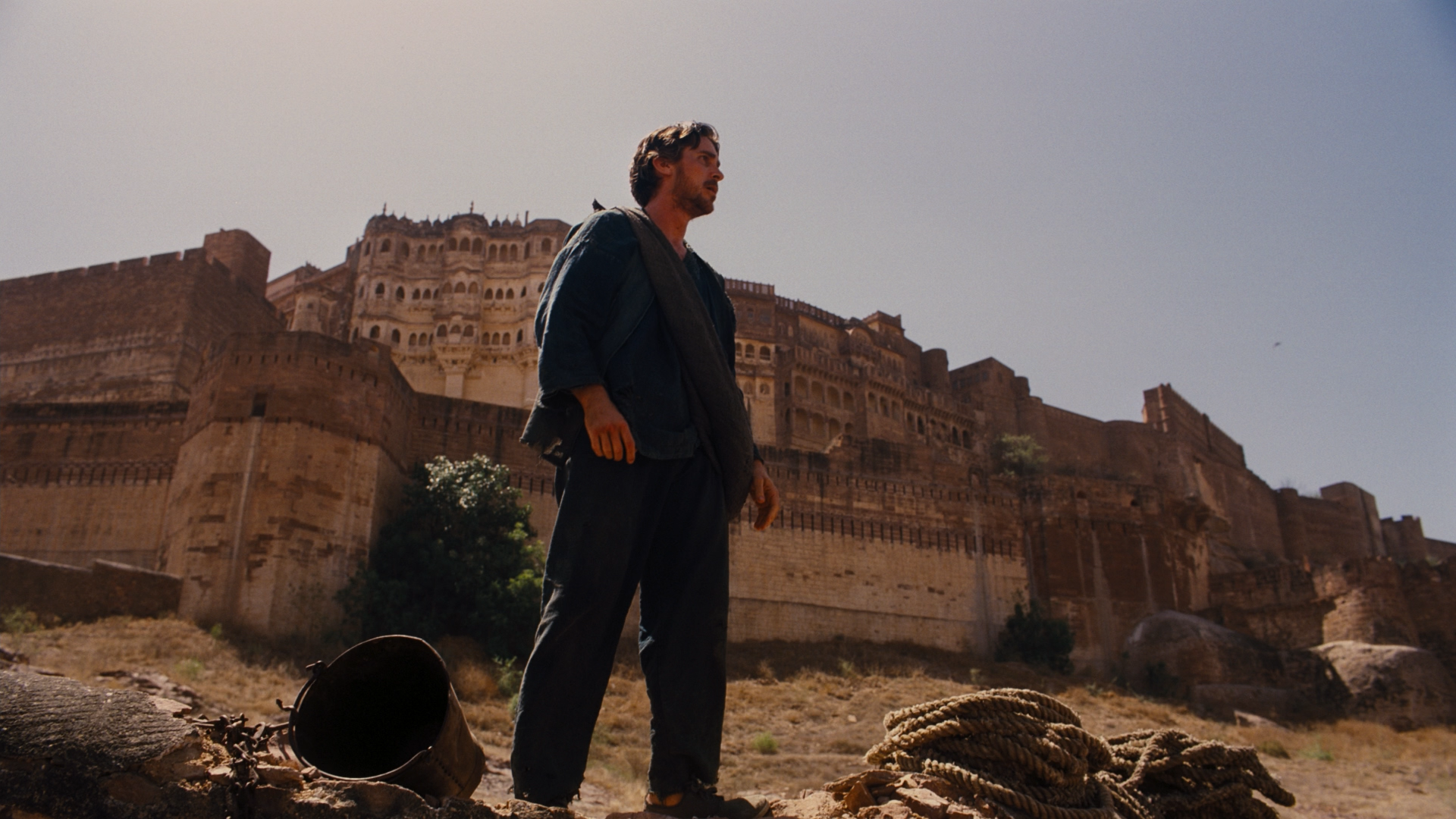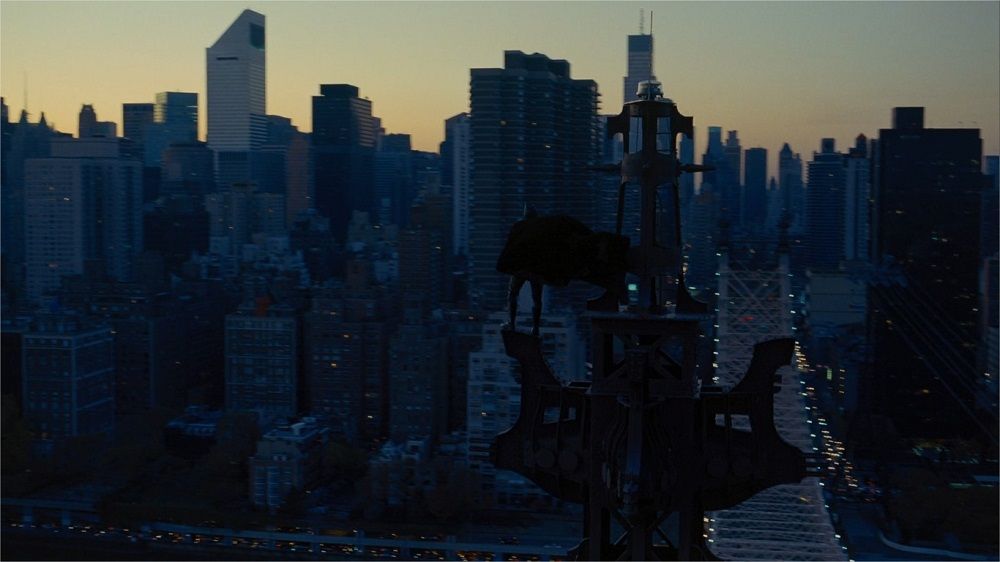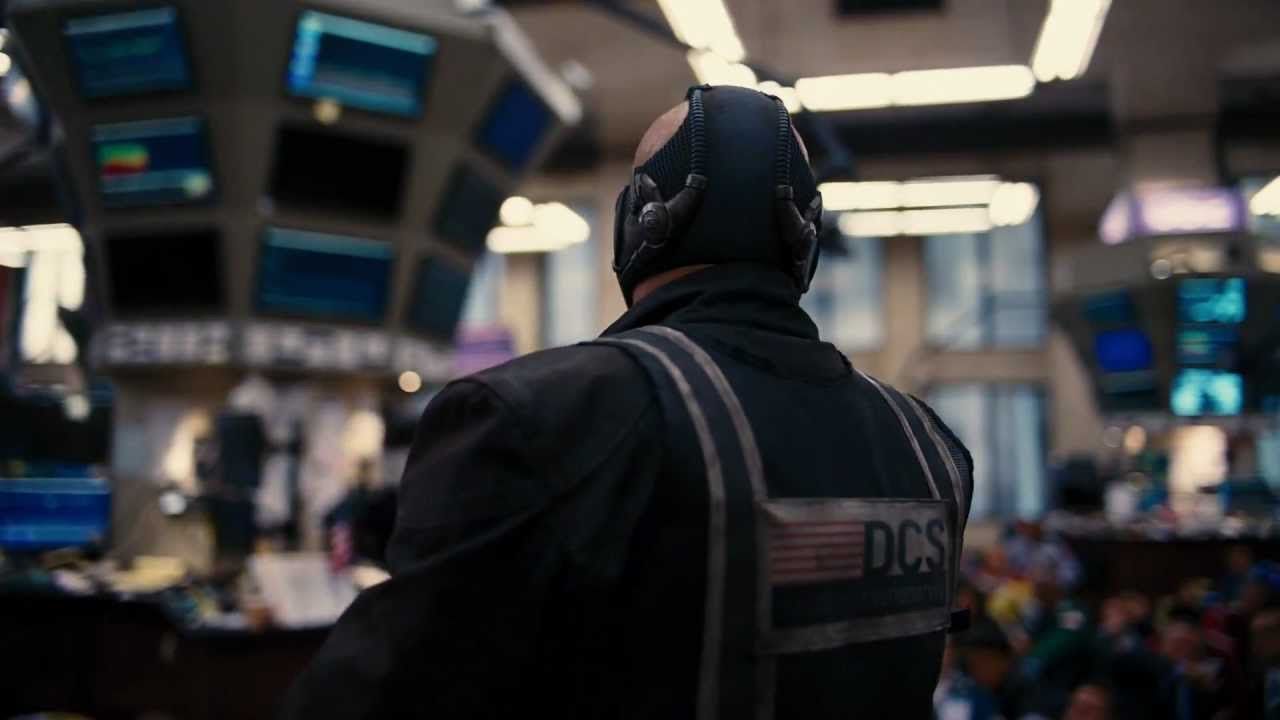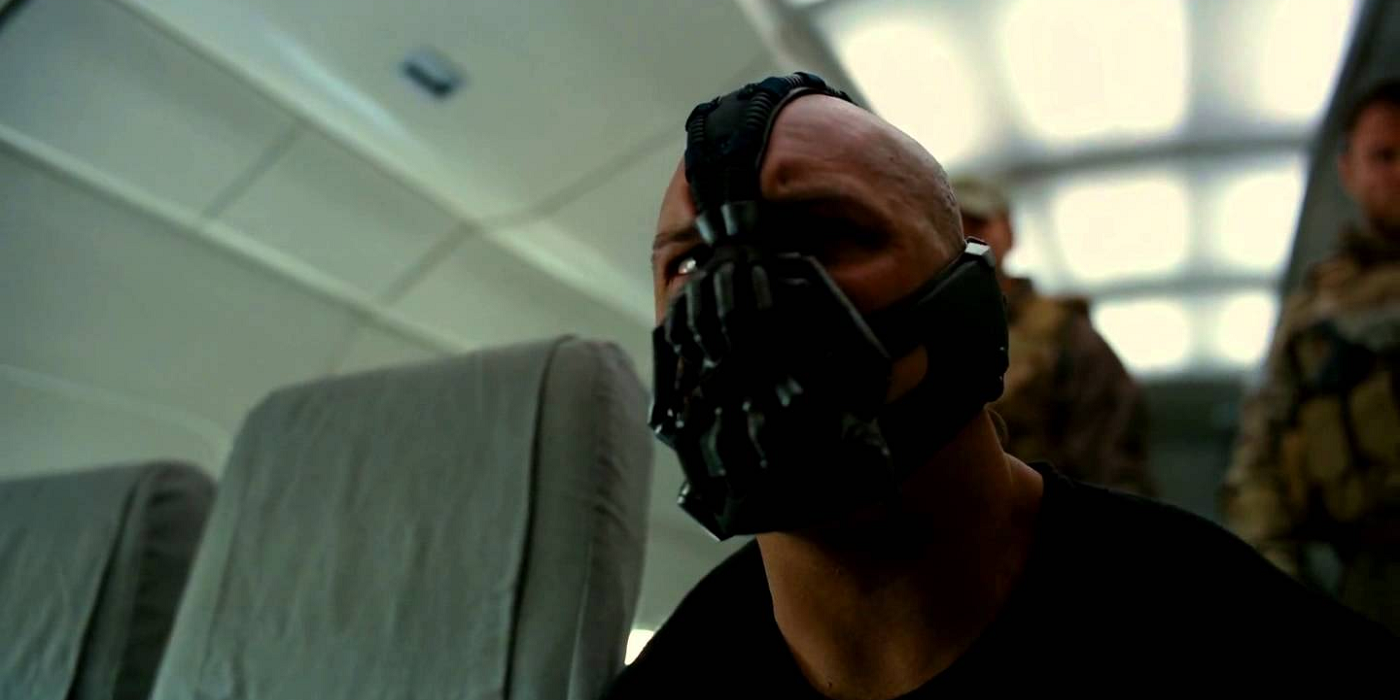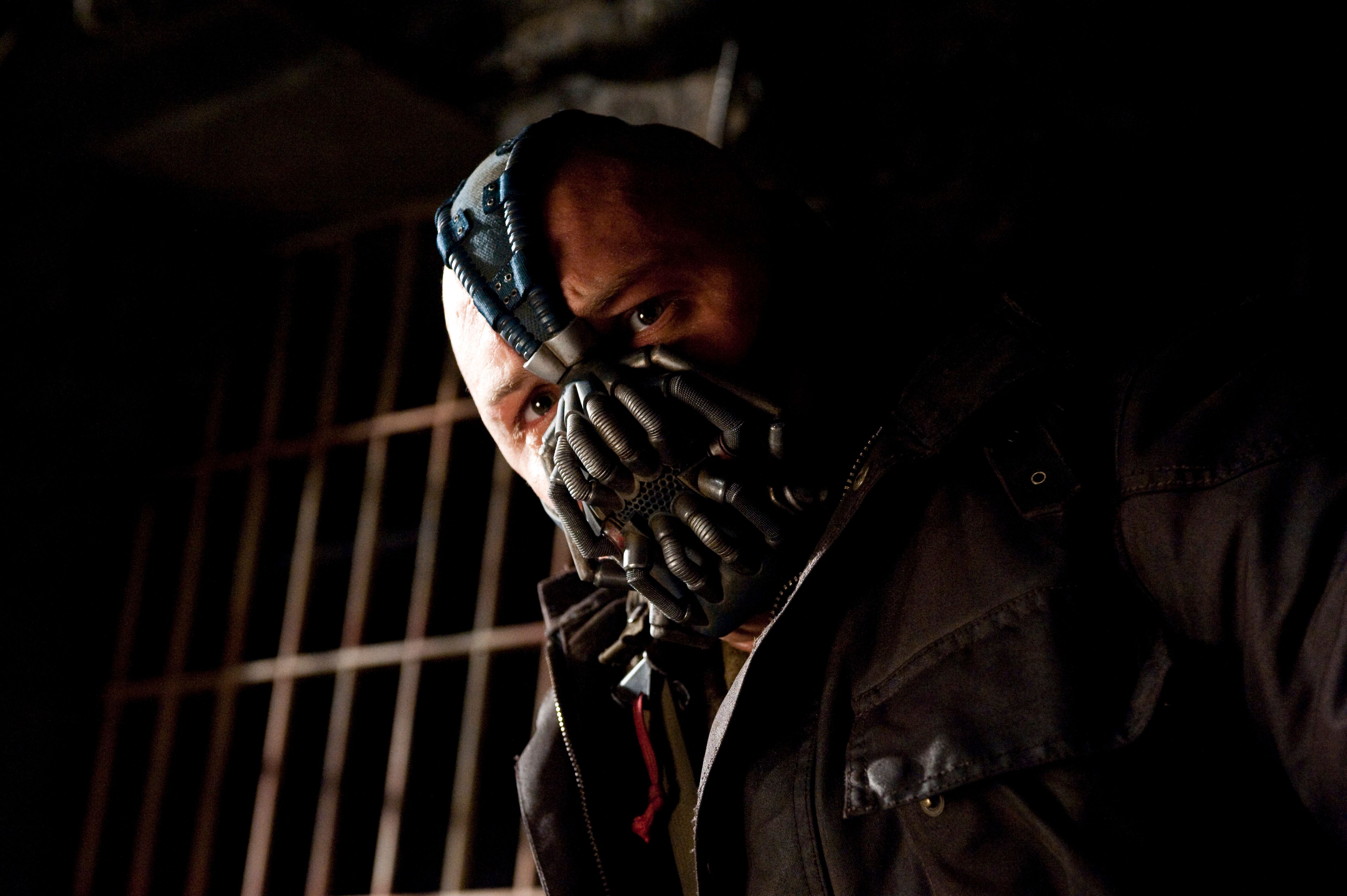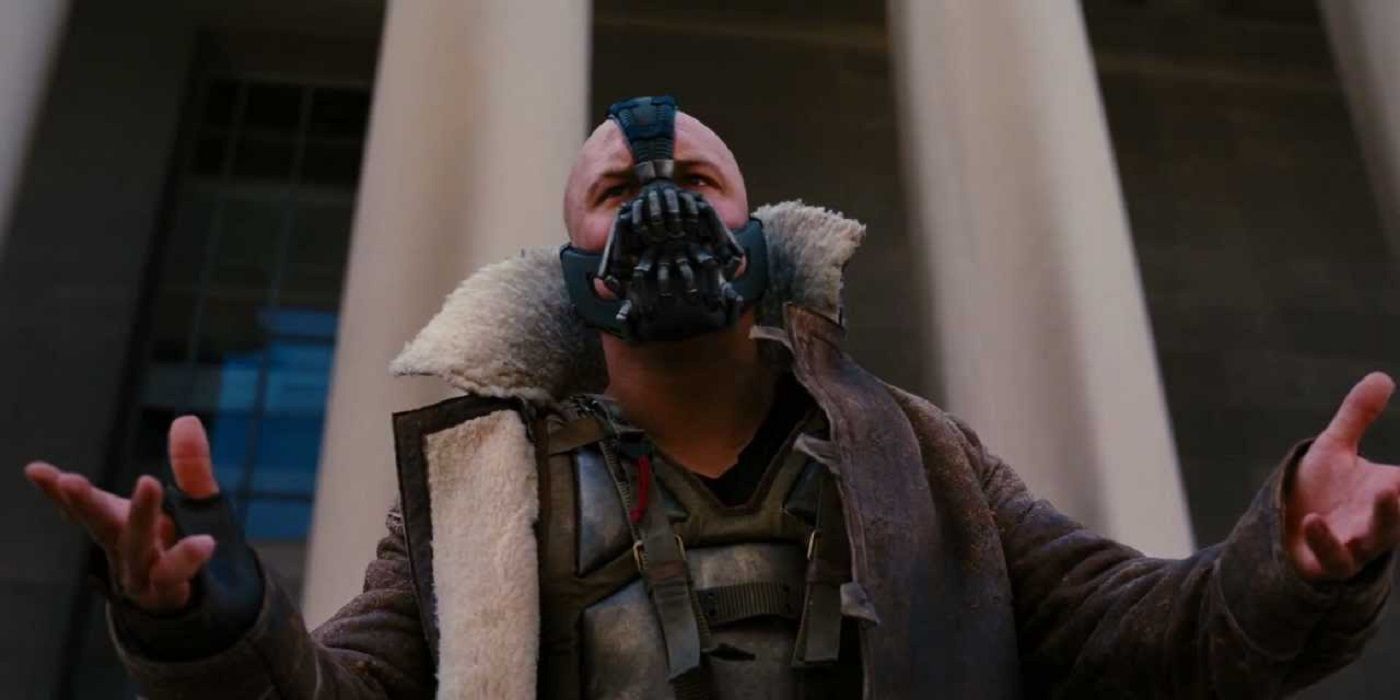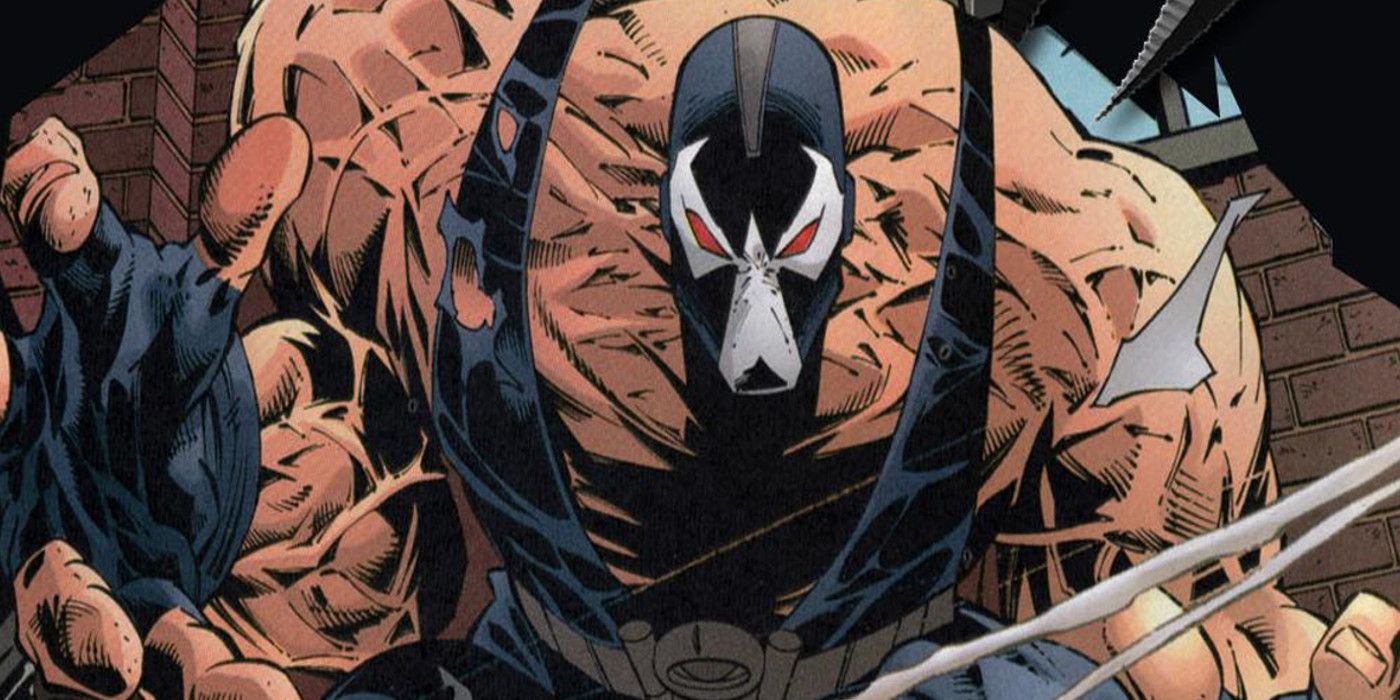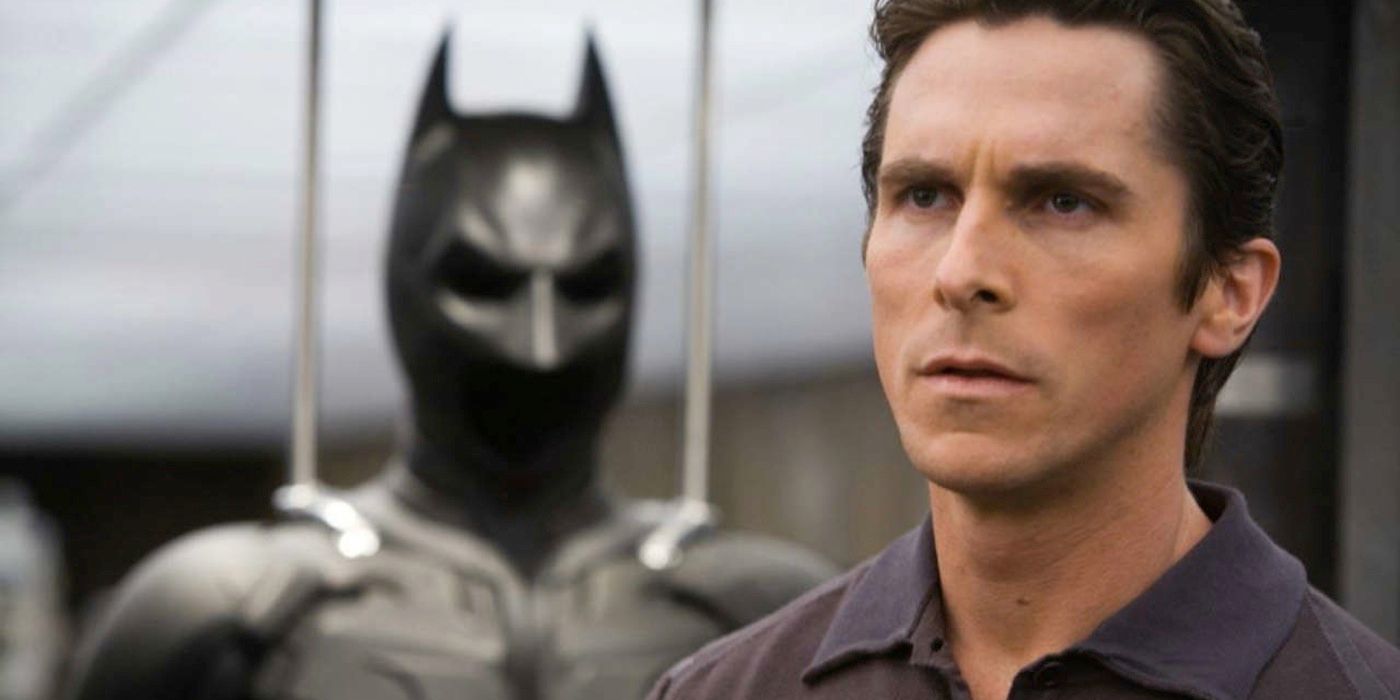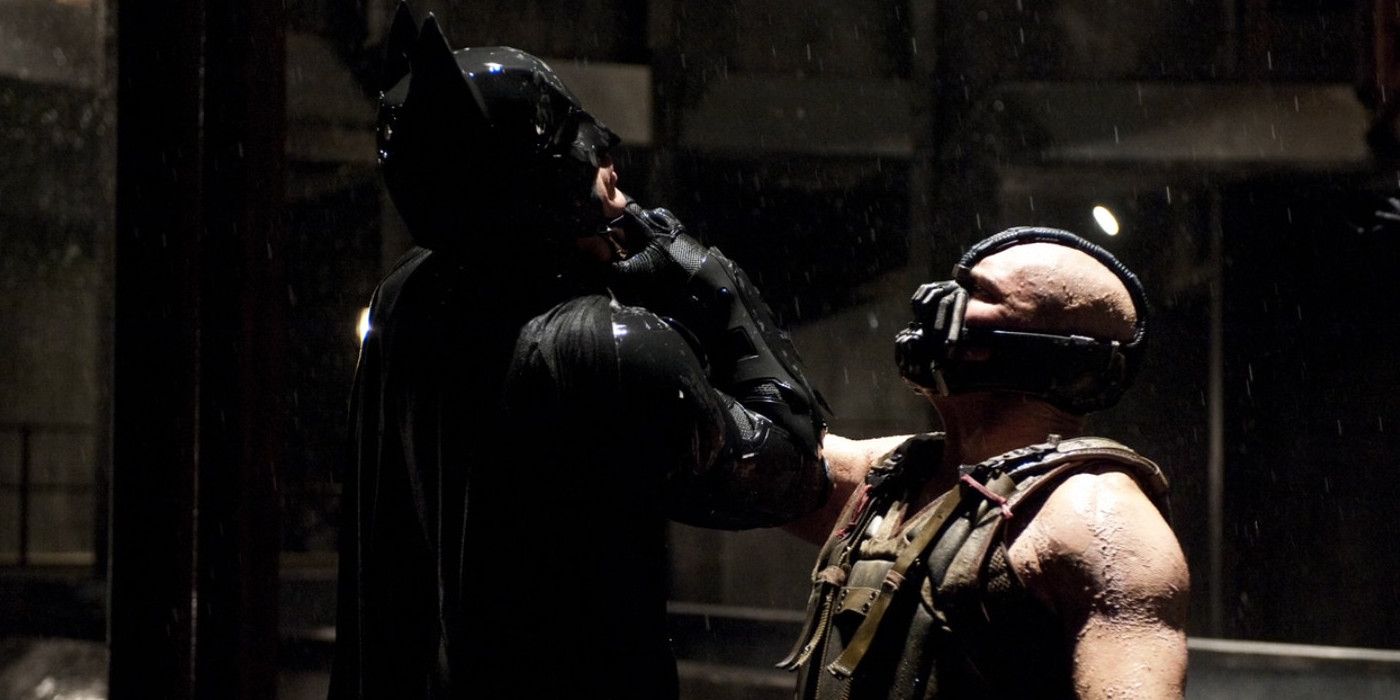There was a lot of pressure on The Dark Knight Rises. It was the final chapter of a trilogy that had already grossed over $1 billion at the worldwide box office, so fans were expecting something big to wrap up the story they’d been following for almost a decade.
Plus, the second part of the trilogy, The Dark Knight, had set the bar absurdly high for the finale. IMDb listed it as the third greatest movie ever made and Heath Ledger won a posthumous Oscar for his performance as the Joker. Christopher Nolan had to somehow top that and bring in a new villain who was both as great as the Joker and completely different.
Nolan decided that to match the psychological threat of the Joker, he needed the next villain to have brawn and be a physical threat to the Caped Crusader. So, Tom Hardy was cast to play Bane, the huge, hulking maniac who once famously broke Batman’s back in the comics. The Bane as we see him in the movie differs greatly from the source material, and just like in any case of something like that happening, the character polarized moviegoers. Both fans and critics had a mixed response to Hardy’s incarnation of Bane, with some calling the character original, unique, scary, and just as instantly classic as the Joker, and others calling him cartoonish, poorly realized, and difficult to hear under that mask.
So, before darkness falls and the shadows betray us, here are 24 Details About Tom Hardy’s Bane That Fans Choose To Ignore.
A CIA plane didn’t see Bane coming
In the opening action sequence, a CIA plane doesn’t detect Bane’s plane and a CIA agent is gullible enough to let these strange, hooded men board his plane. The scene is an otherwise breathtaking cinematic experience, especially back in 2012 when it was being projected onto the biggest IMAX screens in the world.
The crew used very little CGI for the sequence and instead utilized practical effects, which made it all the more spectacular. But the whole setup is unrealistic. This is the CIA we’re talking about, the Central Intelligence Agency. This guy would probably have a little bit of intelligence if he’s working there.
He’s barely audible under that mask
Bane’s mask might look badass, but it muffles his speech to the point that he’s barely audible. You can hardly understand a word he’s saying. Tom Hardy might as well have spoken all of his lines into a pillow.
And he’s the kind of character who makes grand, sweeping remarks and might disappear into a monologue at any moment. Out of all the characters in The Dark Knight Rises, he’s the one whose dialogue you need to hear the most. And yet, most of the time, you can’t make out any of it.
It’s never explained why he wears the mask
Bane is never shown without his mask on and it’s shown to be a vital part of his life. He freaks out whenever Batman comes close to taking it off his face. However, the movie never explains why he wears the mask in the first place.
Christopher Nolan has explained that it’s filling his body with a numbing agent to deal with being “ravaged by pain from a trauma suffered long ago,” but the trauma isn’t actually depicted or even described in the movie. Even off-screen, Nolan is vague about it.
It’s never explained where he got the mask from
In discussing the influences on his characterization of Bane in The Dark Knight Rises, Christopher Nolan noted Darth Vader. That’s a no-brainer, because Vader is the gold standard when it comes to movie villains.
Like Bane, a large part of Vader’s getup is his iconic mask. But Vader’s mask is iconic because we know why he needs it and we know where he got it from. As far as The Dark Knight Rises explains, Bane simply wears his mask because he found it somewhere and it looks cool. We got the backstory of the Joker’s scars – why not Bane’s mask?
Tom Hardy’s Bane fears nothing, but in the comics, he had a phobia of bats
In the comic books, Bane developed a phobia of bats after being haunted by them in his dreams, which added another dimension to the conflict when he finally came face to face with the Bat of Gotham. Tom Hardy’s Bane isn’t scared of anything, which makes him a worthy foe for Batman, but a less interesting character.
It’s a totally one-sided conflict if the bad guy has nothing to fear and the good guy has everything to fear. This is the kind of lazy character work that has given the superhero genre a “villain problem.”
The fight choreography leaves a lot to be desired
The physical clashes between Bane and Batman have made for some of the most exhilarating scenes in comic book history, but somehow it didn’t translate to the big screen as well as it could’ve done.
With the deft direction of Christopher Nolan behind the camera and the hands of his long-time editor, Oscar winner Lee Smith, in charge of making the cuts, the hand-to-hand combat between Bane and Batman in The Dark Knight Rises should’ve been a cinematic sight to behold, but it just fell flat. The choreography is to blame – it just wasn’t that good.
Bane shouldn’t know about the Applied Sciences department
Bane seems to know all about Lucius Fox’s wing of Wayne Enterprises that designs all of Batman’s tech. But Fox himself says Applied Sciences is “completely off the books.” It establishes a villain as a serious threat if they know a surprising amount of information about our hero, but they at least need to be able to feasibly know it.
There’s no way Bane could’ve found out about Applied Sciences. It’s not in any of the company’s records and Bane doesn’t have any moles in Wayne Enterprises – and even if he did, that mole would have to be either Bruce Wayne or Lucius Fox, because they’re the only two guys who knew about the department.
His plan relied on Commissioner Gordon
A huge part of Bane’s plan to take over Gotham relied entirely on Commissioner Gordon doing his job terribly. It hinged on the expectation that Gordon would send literally every single cop in the city into the tunnels where Bane could trap them, thus banishing law and order.
But surely no police commissioner worth their salt would be that stupid – especially in a city as crime-ridden as Gotham. It worked, though, and that’s exactly what Commissioner Gordon did, so maybe we all overestimate Commissioner Gordon because he’s a nice guy.
He’s supposed to have a body like the Hulk
Between his casting and the movie’s production, Tom Hardy gained about 30 lbs of muscle to play Bane, which made him about 200 lbs total. However, Bane is supposed to be as big and as strong as the Hulk. In the comics, when he’s jacked up on Venom, he weighs in at 350 lbs.
Obviously, a real-life human man can’t make that kind of weight just for a role and when 405 lb wrestler Robert Swenson played Bane in Batman and Robin, it looked cartoonish. But come on, meet us in the middle.
Bane’s henchmen don’t use their guns
There’s a running joke that the henchmen in action movies are utterly useless. They’re basically human shields that the real villain throws between himself and the hero to ensure the movie makes it to two hours.
But you’d think that Christopher Nolan and the gritty, realistic tone he was giving to his Batman films wouldn’t allow such foolish stock characters to appear. And yet, that’s exactly what Bane’s henchmen do in The Dark Knight Rises. It’s almost a parody of the fight scenes in Jason Statham movies as the henchmen stand around and go after Batman one by one instead of attacking as a unit. A lot of them are armed with guns and choose not to use them.
He flew Bruce Wayne to India
Bane needed Batman out of the way for his plan to work – but he didn’t need him that far out of the way. Rather than just ditch Bruce Wayne and his broken back somewhere more local, Bane decided to fly him out to a cave in India instead of seeing out one of the most important parts of his plan.
Getting Batman out of the way allowed Bane’s revolution to truly begin and Gotham to be taken over without a beacon of hope for its people to look towards – and he missed that for the sake of symbolism.
He doesn’t wonder how Bruce made it back from India in no time
Despite the fact he flew him out to a hole in India and left him with no resources, no money, and no allies, Bane doesn’t seem to question how Bruce Wayne made it back to Gotham in a matter of days. In fact, he almost seems to have expected it to happen.
The audience is also left to wonder this. The movie doesn’t explain it. Alfred had retired, Bruce had been bankrupted, and he was on the other side of the world. And yet, the movie just cuts from his escape from the pit in India to him standing in the full Batsuit, ready to take back his city.
He pre-empted the Occupy Wall Street movement
While The Dark Knight Rises was released a few months after the Occupy Wall Street protests, the script was written before it and no one seems amazed by the fact that Bane’s politics line up very closely with that of the movement.
Christopher Nolan based the script on the plot of Charles Dickens’ A Tale of Two Cities and the French Revolution, but in his writing of Bane’s politics, he seems to have foreseen the Occupy movement. However, Nolan has denied that his Batman movies are political and says they simply throw questions in the air as the backdrop to the story he’s telling.
He fakes Pavel’s passing all wrong
Christopher Nolan may have based The Dark Knight Rises’ story on a Victorian-era novel by Charles Dickens and a sociopolitical movement that happened in the 1700s, but it is set in the modern day and revolves around many modern technologies. So, with this in mind, Bane fakes Pavel’s passing all wrong.
He transfers Pavel’s blood into a decaying body to fake his passing, but blood isn’t the only thing the forensics people would check. The body’s dental records, DNA, and fingerprints would all be someone else’s. If the story is set in a world where a man can build himself a flying car, then paramedics can correctly identify a body.
The SEC wouldn’t allow Bane’s fraudulent stock trades
Bane bursts into the Gotham Stock Exchange to force some stock trades to make Bruce Wayne bankrupt with the threat of violence and the illegal use of Wayne’s fingerprints – the SEC wouldn’t look too kindly on that.
This would put an obstacle in the way of Bane’s plan if the movie didn’t choose to ignore it. Stocks all exist in cyberspace. It’s not like breaking into a bank vault and stealing hard, physical cash. If fraudulent stock trades were made in broad daylight as Bane does in the movie, the SEC would swoop in like a hawk to veto them.
A lot of his dialogue is ridiculous
Lines like “I am Gotham’s reckoning!” come off as silly. It’s unfair to compare Bane to Heath Ledger’s iconic Joker, but these two characters’ dialogue was being written by the same guys and it certainly doesn’t seem that way.
The Joker’s speech about how he got his scars chills viewers to the bone, while Bane’s speech about being born in the darkness (“The shadows betray you, because they belong to me”) just comes off as tacky and lame. It’s not necessarily poorly written, it’s just written for a different kind of movie. This stuff wouldn’t be out of place in an MCU movie, but the tone those movies are going for is the polar opposite of the tone Nolan was going for.
We never get a real sense of Bane-occupied Gotham
After Bane takes over Gotham City, we get a series of sketches, like the Scarecrow presiding over a court of law and exiling people onto the ice and people cowering in their homes, but we never get a real sense of it as a location.
Visually, it certainly does look bleak and depressing. But we don’t get the full picture of what Bane had in mind, which is the whole point of the plot. This is surprising coming from such a talented director as Christopher Nolan who is usually so skilled at telling stories on an epic scale.
His origin story was much better in the comics
In the comics, Bane was essentially Captain America gone wrong. He was a part of an experimental super-soldier program that was supposed to create a race of supermen that could go off and fight wars for people.
However, the experiment went awry and created a huge, angry, incomprehensible, muscle-bound baddie. Soon enough, he was one of Batman’s most dangerous foes. He was full of chemical agents, he was twice the size of a normal human being, and he was as always mad. This backstory is far more exciting than that of Tom Hardy’s movie Bane.
He shouldn’t know Batman’s identity
When Batman first confronts Bane, Bane knows he’s Bruce Wayne. We’re probably expected to piece together that Bane learned this from his old pal Talia al Ghul, who learned it from her father Ra’s al Ghul, who trained Bruce to become the Dark Knight.
But this timeline doesn’t line up, because Bruce and Talia seem roughly the same age. Bane helped Talia escape from the pit when she was a child and Bruce didn’t train with Ra’s until he was in his twenties. So, Bane shouldn’t know who Batman is.
His voice doesn’t match his physicality
Hardy has explained Bane’s much-criticized vocal inflections as a character choice, but it’s weird to see such a menacing guy with such a silly voice. Hardy based the voice on bare-knuckle boxer Bartley Gorman’s distinctive Romani accent combined with Caribbean accents, but the end product is more unusual than ominous.
Heath Ledger was scary as the Joker. He didn’t have a bulky physical presence, but he looked like a madman, he acted unstable, and he had a creepy voice. Hardy’s Bane has the fearsome presence, but he’s only fearsome when he’s not talking. As soon as he opens his mouth, that fear goes out the window.

